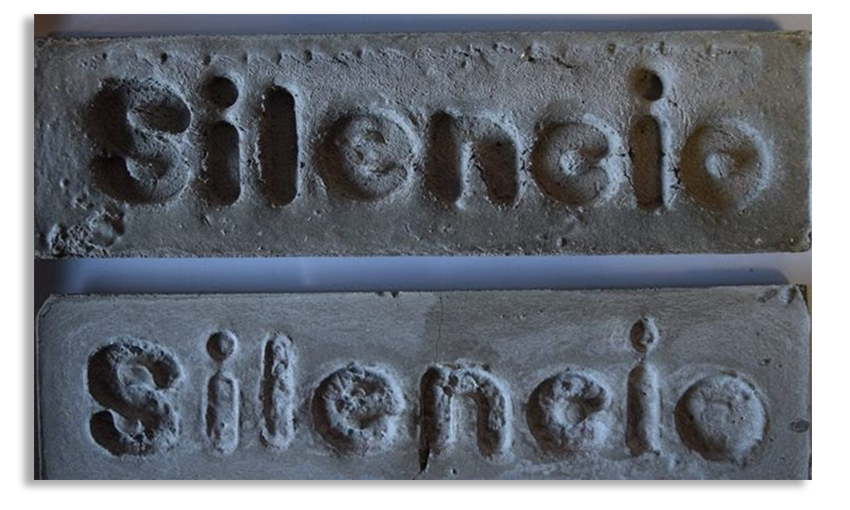Prototyping Texts
The tagline for this graduate seminar was, “Questioning the face value of texts. Prototyping what else they could be.” And the premise? To encourage students to learn more about literary texts by repeatedly altering them. Iterate, iterate, iterate. Make the text an image. Make it metadata. Make it ASCII. Make it a booklet. Make it a fillable form. Make it sound. And so on.
I arrived at the pedagogy for “Prototyping Texts” after several years of teaching critical technical practices in digital studies. While both interesting and important, I noticed that such practices were nevertheless drawing students and me away from the content (books, art, games, film) we wanted most to engage. So I began to wonder what would happen if my digital studies courses went low-tech and design-forward.
One result of this shift was less debugging. Another was more attention to mediation (as an object of inquiry, if you will) and fewer concerns about knowing how to use particular tools or software. Low-tech pedagogy also opened the course material to a wonderful variety of student approaches, often driven by what they already knew or cared about. How they altered a given text, or from which angle, was mostly up to them. Danny Martin, for instance, decided to render Eugen Gomringer’s “silencio” in concrete (prototype pictured above and below). Needless to say, “make it concrete” was not on the syllabus.
Below I link to the course website, poster, and syllabus for “Prototyping Texts” as well as to my notes, a review (“Types of Prototypes”) I wrote for students, and two talks I gave that addressed the context and motivations for the seminar. I’ve also included the official description of the course.

Prototyping Texts
Spring 2016 and 2017 | UVic English 508 | Grad seminar for 12 students
Links: course website (HTML); syllabus (PDF); poster (PDF); notes (HTML); review of “Types of Prototypes” (HTML); talk at AIGA with slides (HTML); talk at Florida State with slides (HTML)
In both theory and practice, this seminar brushes against four popular assumptions about digital humanities: 1) as a service to researchers, the field merely develops digital resources for online discovery and builds computational tools for end-users; it does not interpret texts or meaningfully engage with “pre-digital” traditions in literary and cultural criticism; 2) digital humanities is not concerned with the literary or aesthetic character of texts; it is a techno-solutionist byproduct of instrumentalism and big data; 3) digital humanities practitioners replace cultural perspectives with uncritical computer vision; instead of privileging irony or ambivalence, they use computers to “prove” reductive claims about literature and culture, usually through graphs and totalizing visualizations; and 4) to participate in the field, you must be fluent in computer programming, or at least be willing to treat literature and culture quantitatively; if you are not a programmer, then you are not doing digital humanities.
During our seminar meetings, we will counter these four assumptions by considering “design fictions,” which Bruce Sterling defines as “the deliberate use of diegetic prototypes to suspend disbelief about change.” Design fictions typically have a futurist bent to them. They speculate about bleeding edge technologies and emerging dynamics, or they project whiz-bang worlds seemingly ripped from films such as Minority Report. But we’ll refrain from much futurism. Instead, we will use technologies to look backwards and prototype versions of texts that facilitate interpretative practice. Inspired by Kari Kraus’s conjectural criticism, Fred Moten’s second iconicity, Bethany Nowviskie and Johanna Drucker’s speculative computing, Karen Barad’s notion of diffraction, Jeffrey Schnapp’s small data, Anne Balsamo’s hermeneutic reverse-engineering, and deformations by Lisa Samuels, Jerome McGann, and Mark Sample, we will conduct “what if” analyses of texts already at hand, in electronic format (e.g., page images in a library’s digital collections).
Doing so will involve something peculiar: interpreting our primary sources by altering them. We’ll substitute words, change formats, rearrange poems, remediate manifestos, create forms, bend data, and build bots. To be sure, such approaches have vexed legacies in the arts and humanities. Consider cut-ups, constrained writing, story-making machines, exquisite corpses, remixes, tactical media, Fluxkits, or détournement. Today, these avant-garde traditions are ubiquitous in a banal or depoliticized form, the default features of algorithmic culture and social networks. But we will refresh them, with a difference, by integrating our alterations into criticism and prompting questions about the composition of art and history today.
For more information, visit the course website.
For “Prototyping Texts” (Spring 2017), Danny Martin rendered Eugen Gomringer’s ‘silencio’ in concrete. Photograph taken and used with permission. I created this page on 17 July 2019 and last updated it on 30 January 2022.